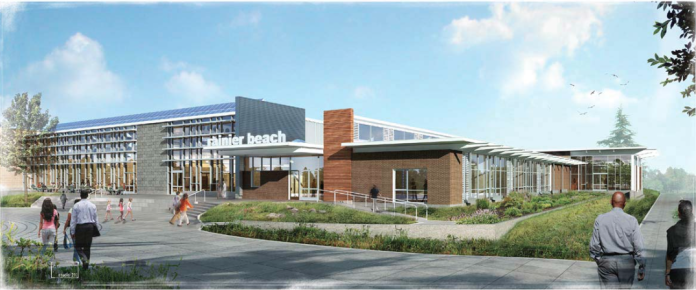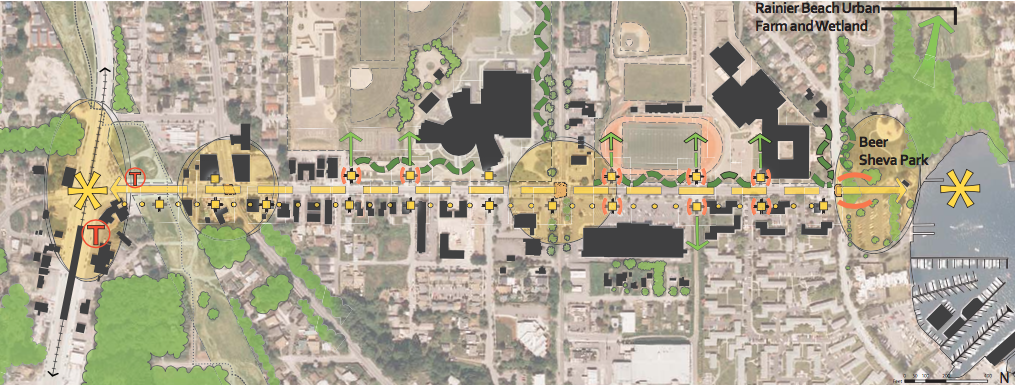The Seattle City Council passed a Rainier Beach Neighborhood Plan Update, among many other things at a busy September 26th meeting. The plan focuses on growing the community in a way that respects Rainier Beach’s diversity, meets its pressing needs, and promotes safer streets and healthier people.
With the loss of Central District as a majority black neighborhood, Rainier Beach has taken on greater importance; some would consider it the heart of the black community in Seattle. The Rainier Beach Action Coalition estimates “Black/African-American households make up 30/8%, Asians 30.7%, Hispanic 13.2%, and Mixed Race 13.8%”.
The plan’s architects sought input across a wide spectrum of the diverse community: “Bicultural and/or bilingual Planning Outreach Liaisons connected with the traditionally underrepresented Oromo (Afan Oromo), African-American, Ethiopian (Amharic), Hispanic/Latino, Laotian, Somali, Filipino (Tagalog), renters, elderly, and youth communities.”
Public Safety
One takeaway from the outreach work: safety was a worry but that a holistic approach to the underlying causes was desired to address it:
Public safety is a major concern, especially for youth and teens. Because feelings of safety derive from a neighborhoods’ overall well-being, they should be addressed from a holistic perspective that includes improvements to all areas of the neighborhood. While having increased police presence and responsiveness are important, a holistic approach would provide full and equal access to opportunities that enable us to reach our full potential. In other words, there should be visible and viable paths to success, and the overall health of the community should be one that creates a safe environment for all.
The specific strategies are broad, including: economic development; access to jobs; improvements in the shopping and walking environments; more activities at parks, community centers and schools; a sense of opportunity, and a strengthening of the community fabric.
The link between safer streets and more people on the sidewalks and eyes on the street hearkens back to Jane Jacobs and seems like a great strategy not only to reduce traffic collisions (especially those involving vulnerable users like pedestrians and bicyclists) but also to perhaps reduce crime more broadly. The plan aims to tackle key intersections and turn them from dangerous to community asset complete with “signature paving” since public art is also a goal of the plan.
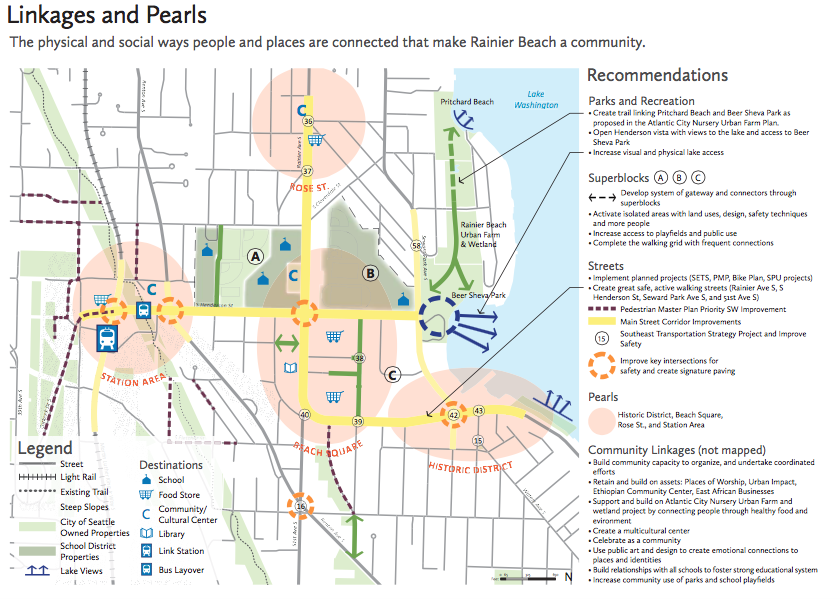
Urban Farm -> Healthier Foods
The map highlights the Rainier Beach Urban Farm and Wetland, alluding to the ambitious vision the neighborhood has to remake its food culture with Atlantic City Nursery turning into an urban farm:
Access to healthy food is important to the community. Many Rainier Beach residents would like to see more and healthier food available at markets and restaurants. It is natural that healthy food should also be an expression of our heritages that is easily shared and appreciated. Unfortunately, Rainier Beach has a high density of fast food restaurants that are neither healthy nor reflective of our culture. As Rainier Beach grows and businesses develop, we should emphasize attracting full service, rather than fast food restaurants.
The Rainier Beach Urban Farm & Wetlands Project is a community led and community bred effort to establish an Urban Farm at the former Seattle Parks’ Atlantic City Nursery site located at 5513 South Cloverdale Street in Rainier Beach. The closing and relocation of the Park’s operations, has created an opportunity for the neighborhood to shape the future use of this park property.
The Friends of Atlantic City Nursery formed out of community interest to create a local source for fresh produce, community gardening, economic development and training opportunities for area residents and youth. The Rainier Beach Urban Farm & Wetlands Project will serve as an innovative effort to build community pride and preservation of the area wetlands and the environment.
Walkable Streets Meet Many Goals
Key to the mobility plan: turning Henderson Street into a safer pedestrian corridor. Henderson is the main route from the light rail station to many of the neighborhood’s destinations from grocery stores to the community center to the grade school to Rainier Beach High School before terminating at Beer Sheva Park on the edge of Lake Washington. And while Henderson Street is the east-west thoroughfare, Rainier Avenue is the primary north-south circulator also slotted for “Main Street Corridor Improvements.” Together these two main streets connect four neighborhood “pearls”: Station Area, Beach Square, Rose Street, and the Historic District (next to the marina).
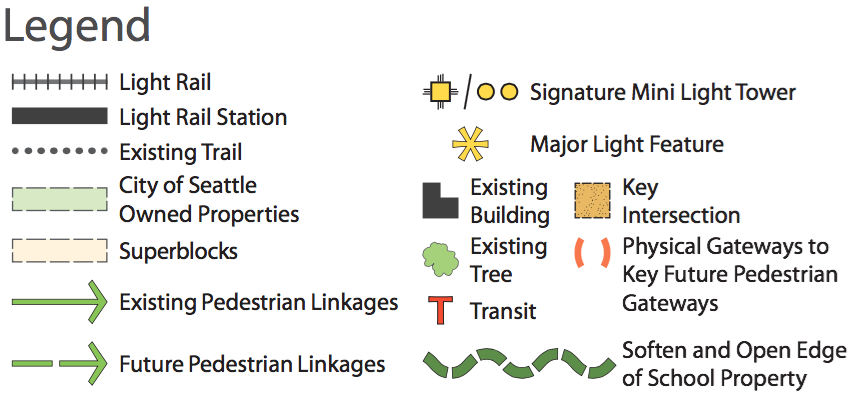
Transit Upgrades
In addition to better infrastructure for people walking, the plan seeks transit improvements cross-referencing the Transit Master Plan: “Implement the Transit Master Plan recommendation to install Transit Signal Priority at the intersection of S Henderson St. and Rainier Ave. S.” The plan calls for better connections to the Link station such as this suggestion: “Extend the #7 trolley to the light rail transit station and relocate associated bus layover from in front of Saars to the station area.”
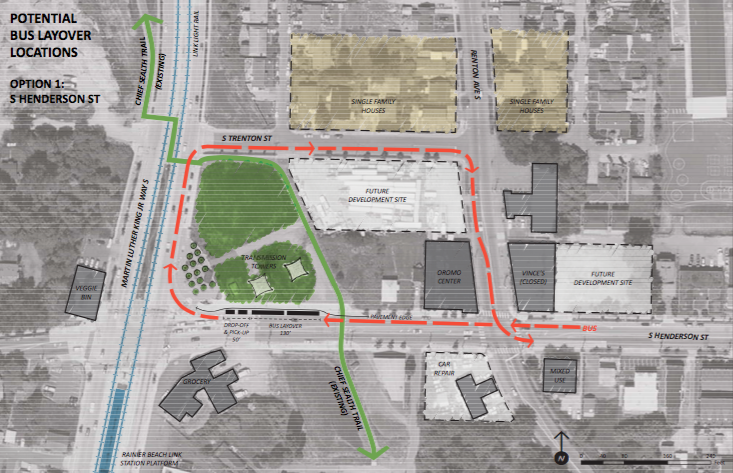
Bicycling Infrastructure
The plan also references the Bike Master Plan and highlights this project: “In implementing the Bicycle Master Plan, add bike lanes to Seward Ave. S as it approaches Rainier Ave. S since cars tend to squeeze out the bicycles in this intersection.” The plan wisely calls for protected bike lanes to connect the light rail station: “[A]ssure that bike facilities near the light rail station area offer the most protection feasible – ideally continuing the bike lanes or a separated bikeway.” The plan stated bicycle education and outreach would also be welcome to boost cycling since “bike culture” isn’t as strong in the area.
Development and Growth Planning
The station area is also a focus for the community’s hopes for development: “Amend development regulations to enable higher density residential and mixed-use development within 1⁄4 to 1⁄2 mile of the light rail station. The objectives are to: encourage development that is beneficial for the community by creating employment opportunities; offering housing affordable across a range of incomes; and creating a destination “entry” to Rainier Beach. Ideas of desired development include: apartments; community college; incubator businesses potentially linked to the Urban Farm; and live/work spaces.” The plan recommends an 85-foot height limit in mixed-use and commercial areas, raising the C-65, NC-40, and LR3 zones that predominate in the station area today.
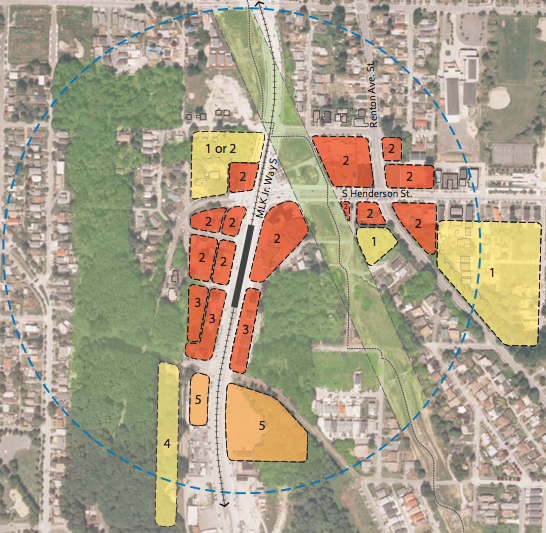
So to the North Seattle neighborhood activists who suggest Rainier Beach take the growth and zoning changes instead of their neighborhoods–a common refrain–basically they already are. Rainier Beach appears to be welcoming zoning changes and planning proactively to harness them to maximize the neighborhood’s benefit.
Neighborhood Leaders Bear Testimony
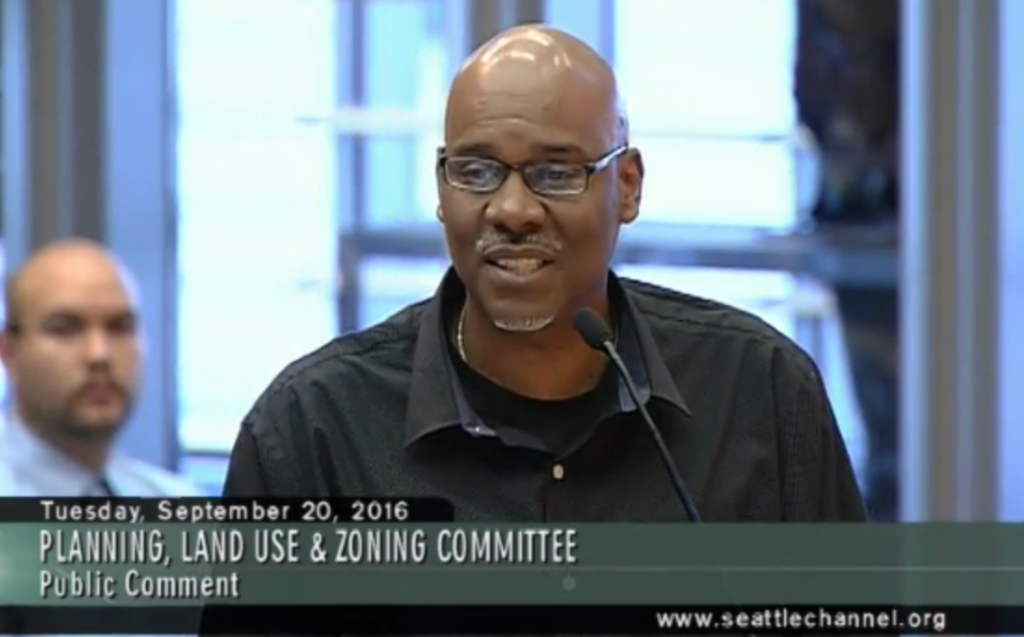
Gregory Davis who helped forge the plan update testified at the Planning, Land Use, and Zoning (PLUZ) Committee meeting on September 20th:
Good morning. I’m Gregory Davis. I’m here about the Rainier Beach resolution. And you hear me exhaling. I got my teeth sunk into neighborhood planning back in the Norm Rice administration where I chaired the Central Area Neighborhood Plan. I then was tasked to being a planning commissioner for six years. And then I moved down to Rainier Beach and began working on the Rainier Beach Neighborhood Plan, there. We participated in update activity, and I’ve been holding my breath since 2010 when we started that process to get our Rainier Beach Neighborhood Plan approved. So I’m exhaling because my friends told me that your committee going to be talking about the resolution, and we’re thrilled. So I may be talking a lot about myself, but I’m also talking about hundreds and hundreds of others who over the years have committed their time, their heart, their ideas around helping make Rainier Beach a better place. So I want to thank you and ask you pass the resolution.
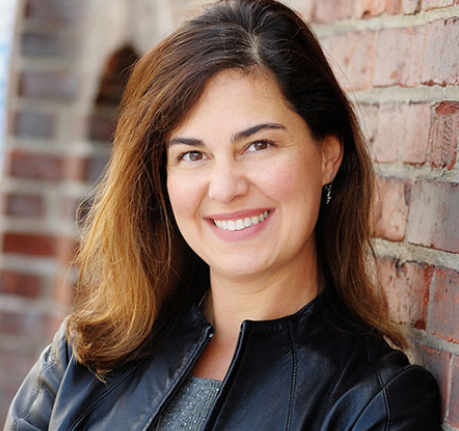
Davis also penned an op-ed in the South Seattle Emerald along with Tammy Morales and David Sauvion, who both also serve on the steering committee of the Rainier Beach Action Coalition, arguing for the City to pass the plan update. Last year Tammy Morales ran against Councilmember Bruce Harrell for the District 2 seat and lost by just 354 votes. Along with Davis, Morales testified at the PLUZ committee mentioning the unemployment rate in Rainier Beach is twice the city’s average:
Part of what we want to do is build an employer base to provide an alternative to just the tech sector in the city. So as you implement this and put your values around equity and social justice into place, it’s important you provide resources to the neighborhood groups that are actually providing work on the ground and helping the community directly.
Education: Rising Expectations, Rising Results
Beyond areas for improvement, Morales’ testimony highlighted the positive energy in the neighborhood. And there are impressive signs of things getting better. Rainier Beach High School has turned heads with its impressive 25% jump in graduation rates in five years so that in 2014: “79 percent of seniors left with a diploma — better than the 74 percent district average.” The addition of an International Baccalaureate program is credited with helping to engage students—flipping the script on the tragedy of low expectations. The neighborhood plan sites education goals from school enrollment through to lifelong learning and calls for more opportunities for students to build job experience: “Employ more youth in Rainier Beach by creating mentorships with local businesses that teach leadership and entrepreneurship rather than continuing the “fast food employment” mentality.”
Seattle’s Most Important Community Center
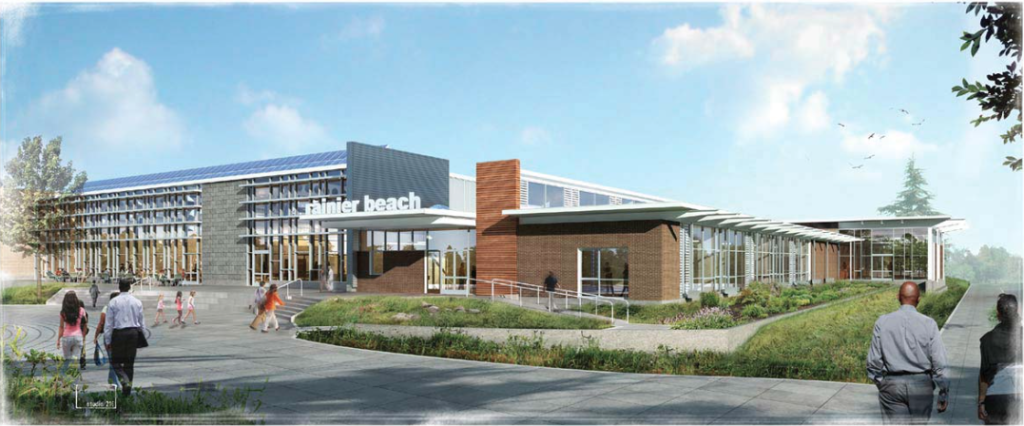
Inherent to any plan to increase street activity is to have destinations that will draw people in. Luckily, Henderson Street is rife with schools, groceries stores, restaurants and businesses. Rainier Beach is already home to the most-visited community center in the city (and it’s not even close). The plan calls for increased hours and programming so the neighborhood can build on that success and accommodate residents better. The City is responding already albeit partially to that respect; Seattle Parks and Recreation plans to add staffing in 2017 as part of its Community Center Strategic Plan 2016.
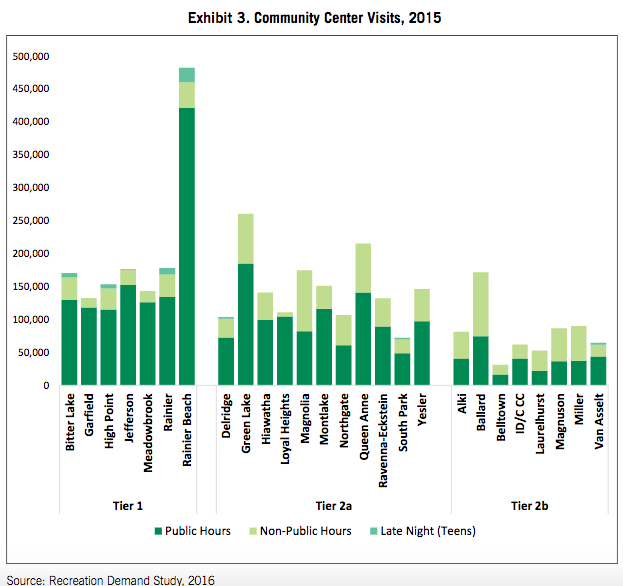
The Rainier Beach Neighborhood Plan Update appears well suited to guide a neighborhood on the rise seeking to keep its rich cultural identity as its economy grows, its streets beautify, and its schools improve.
Doug Trumm is publisher of The Urbanist. An Urbanist writer since 2015, he dreams of pedestrian streets, bus lanes, and a mass-timber building spree to end our housing crisis. He graduated from the Evans School of Public Policy and Governance at the University of Washington in 2019. He lives in Seattle's Fremont neighborhood and loves to explore the city by foot and by bike.


